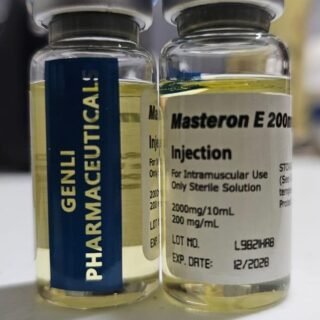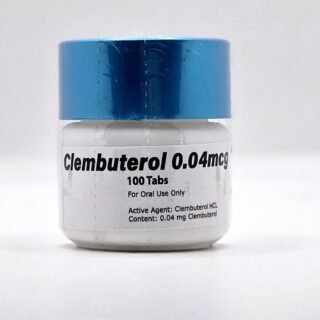Category
- Best Peptides for muscle growth
- Geno Pharma Domestic Warehouse 2 (Canada&USA)
- GP(Domestic Shipping US) Warehouse 1
- Human Pharma Premium
- Phar Labs Premium-Select
- Steroids on Sale USA, Real Steroids Online
- New arrivals in USA
- Most popular steroids in USA
- Antiestrogens / Gonadotropins
- Bangkok Steroid USA
- Biopharma Steroid USA
- British Dragon
- Anabolic Steroids for Horses
- Fat-burners
- Gen Pharma USA
- Medical Pharma Steroid USA
- Medical Tech Steroid USA
- Novocrine Steroids
- HGH USA
- Omega Labs Steroid USA
- Rotterdam Steroids USA
- SARMs USA
- Sciroxx
- Sydgroup Steroid USA
- Big vetenary Steroid USA
- Watson Steroids
- XT Labs Steroids
Most Popular steroids USA
-
 Saizen 8.8 mg (Somatropin) 26.4 UI Domestic USA
Saizen 8.8 mg (Somatropin) 26.4 UI Domestic USA
$115.00Original price was: $115.00.$98.00Current price is: $98.00. -
 PARAMIX 300 Genli Pharma – Trenbolone A, E & Hexa Mix 10 ml
PARAMIX 300 Genli Pharma – Trenbolone A, E & Hexa Mix 10 ml
$110.00Original price was: $110.00.$99.00Current price is: $99.00. -
 Testosterone 400 Biopharma 10 Ampoules
Testosterone 400 Biopharma 10 Ampoules
$99.00Original price was: $99.00.$75.00Current price is: $75.00. -
 Testosterone Cypionate 200 Biopharma 10 amp
Testosterone Cypionate 200 Biopharma 10 amp
$99.00Original price was: $99.00.$72.00Current price is: $72.00. -
 Drostanolone Enanthate 200mg 10 ml - Masteron Enanthate
Drostanolone Enanthate 200mg 10 ml - Masteron Enanthate
$110.00Original price was: $110.00.$90.00Current price is: $90.00. -
 Primobolan Pills 25mg 100 pills Domestic USA
Primobolan Pills 25mg 100 pills Domestic USA
$99.00Original price was: $99.00.$85.00Current price is: $85.00. -
 Clenbuterol for Sale 40mcg 100 Tabs - GP Premium Domestic USA
Clenbuterol for Sale 40mcg 100 Tabs - GP Premium Domestic USA
$99.00Original price was: $99.00.$65.00Current price is: $65.00.


Table of Contents
ToggleOxandrin may cause Liver toxicity
by Michael Mooney (Original article in issue #7, October, 1998. Updated July, 2001)
(See also Dr. Donald Abrams review in The AIDS Reader March, 2001;11(3)
While Oxandrin is promoted as being non-toxic to the liver, the truth is Oxandrin is a 17-alpha alkylated oral anabolic steroid so it has the potential to burden the liver, just like any other oral 17-alpha alkylated steroid.
We have questioned that its potential for liver toxicity would be enhanced when it is used with other liver-challenging drugs like protease inhibitors and other standard AIDS medications, or with higher dosages. We have an answer.
At the Geneva AIDS Conference, Dr. Carl Grunfeld presented the preliminary results of a placebo controlled dose-ranging study that used 20, 40 and 80 mg daily doses that showed that doses of 40 and 80 mg cause incidence of elevated transaminases (SGOT and SGPT), which may indicate liver toxicity.
Doses above 20 mg per day were tested because 20 mg was found to be relatively ineffective for lean mass gain in some men. Oxandrin is a better option for women who need about half the men’s dose. Children need much less.
Although most studies tell us that Oxandrin is relatively safe for HIV-negative people, oxandrolone produced evidence of liver toxicity in studies of boys with kidney failure in 1980.1 We have been somewhat surprised at the number of HIV(+) men who report to us that Oxandrin caused elevations in the blood tests that can indicate liver toxicity. Physician’s should monitor liver tests carefully when Oxandrin, or any oral anabolic steroid is used, especially in higher doses.
Winstrol, another oral steroid is a less expensive option for males. It appears to be somewhat more anabolic than Oxandrin, and a 6 to 18 mg. daily dose has produced good muscle gains without detectable liver burden in males we’ve observed. Anadrol is another powerful option, and while it is thought to be toxic to the liver, we had not had one report of Anadrol at doses as high as 150 mg per day causing elevated liver enzymes until July, 1999, after Anadrol had been on the market for about a year and a half.
This male reported that he had used Anadrol with no negative effect on his liver enzymes when he was using the anti-HIV medications Viracept, Zerit, and Epivir. About nine months after he ended the first Anadrol cycle he started a new cycle of Anadrol, but this time his HIV medications consisted of a cocktail of Videx, Viramune, Hydroxyurea, and Ziagen.
Within a few months of this second cycle of Anadrol, blood tests that can indicate liver problems became elevated. It appears that one or more of the medications he was using had some problematic interaction with Anadrol. While we do not know conclusively which medication(s) may have promoted the problem, we have been hearing reports of liver toxicity being associated with hydroxyurea used in combination with other medications in HIV, so this should be taken into consideration.
Interestingly, he also said, “… Anadrol produced much quicker, better results regarding muscle growth. It seemed that just looking at weights added mass! I went from about 185 lbs to about 203 lbs in about 4 months. After stopping the Anadrol and continuing the workouts, I leveled out at 195. The Oxandrin seems to be less effective, although to be fair, I’ve only been on it for 3 weeks.”
Added July, 2001: As time has passed since Anadrol has been introduced into the HIV community, evidence of liver toxicity has appeared, but generally with higher dose use. It appears that oral steroid doses over 20 mg per day, in general, should be considered to have potential for liver toxicity. Anadrol has been prescribed in HIV medicine in doses up to 150 mg per day, and at this dose we have had some reports of liver enzyme elevations, including GGT, a discreet liver function test.
Compare Drug Toxicity at Equal Doses
It is important to note that comparisons of studies that showed a seeming lack of a negative effect of Oxandrin on liver enzymes with HIV(-) and HIV(+) people related to studies of Anadrol that showed a negative effect are not credible.
When we consider that liver toxicity is a dose-related phenomena, and then consider that the typical doses that Anadrol has been used and studied at are often 100 mg per day, and the doses that Oxandrin has been used and studied at are usually about 10 to 15 mg per day, there is no credible way to use data from these studies to compare the potential for toxicity of the two steroids. To accurately compare them each steroid must be given at the same dosage to matched subjects.
The Grunfeld study that showed that Oxandrin caused elevated SGOT and SGPT enzymes raises questions about whether Oxandin is just as potentially toxic as any other steroid at higher doses.
Those who’ve had liver disease or are using protease inhibitors (especially Norvir) should have their liver function tested regularly while using any oral steroid and take liver protectants like evening primrose oil, silymarin, lipoic acid, glutamine, and N-acetyl-cysteine.
Also, because oral steroids can decrease the “good” HDL cholesterol and increase the “bad” LDL cholesterol, oral steroids can increase the risk of cardiovascular disease (CVD). If you use oral anabolic steroids consider taking 400 to 800 IU of Vitamin E, and 1,000 to 2,000 mg. of Vitamin C with each meal. These vitamin antioxidants help to protect cholesterol from the oxidation that is associated with CVD.
References
Jones RW, et al. J Pediatr, 97(4):559-66 1980
Share this page:
- Click to share on X (Opens in new window) X
- Click to share on Facebook (Opens in new window) Facebook
- Click to email a link to a friend (Opens in new window) Email
- Click to share on LinkedIn (Opens in new window) LinkedIn
- Click to share on Reddit (Opens in new window) Reddit
- Click to share on Pinterest (Opens in new window) Pinterest
- Click to share on Telegram (Opens in new window) Telegram
- Click to share on WhatsApp (Opens in new window) WhatsApp
- Click to share on Tumblr (Opens in new window) Tumblr
Written by Steroids USA
Pay with WISE APP or Remitly
Pay with WISE App or Remitly
Fast money transfers from USA for fast delivery of steroids
Secure delivery in USA
100% reliable shipping in USA
24x7 Support
Online 24 hours
Low cost delivery
Great shipping prices in USA
BULK ORDER DISCOUNT
If you are a reseller in the USA you can get a special DISCOUNT, we can give you up to 50% or more on bulk orders. If you want to make a bulk order, we can negociate for orders of over USD$4,000, contact us by email.
Steroids info










